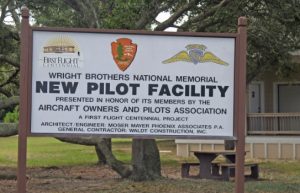From the 1903 Wright Flyer to the 777-8 Freighter, a lot has changed in aircraft, and along the way, a lot has also changed in the way pilots are trained. Compared to the technology used to train pilots today, student pilots of the past might as well have been sitting in front of a fan in a cardboard box with crayon drawings of instruments as they made engine noises and imagined themselves soaring through clouds made of cotton balls.
Although you might think that’s a stretch, the training experiences of today’s student pilots would certainly blow the Wright brothers’ minds.
Flight Simulators
What it is: A flight simulator is a machine specifically designed in the style of a cockpit so that pilots and pilots in training can use computer-generated images to practice flight, including the same tools and aircraft motion they would use and experience during actual flight.
Flight simulators have been around for a while, with the first flight simulator called the Link being used around 1929. The flight simulators of today are quite different from the Link of 1929 and are even considerably more advanced than the Microsoft games of the 80s. In fact, some of the more advanced flight simulators have been a part of helping aspiring pilots learn become accustomed to flight for decades. Some flight simulators are even so advanced that the FAA will allow student pilots to log their simulator time in their pilot logbook as training time.
- – Benefits: There are some definite benefits to using flight simulators to help prepare student pilots for the actual experience. Student pilots can grow more familiar with running through their checklists and learning every step-by-step procedure and process. They move these elements of flight into their muscle memory. They can also help them practice understanding all the nuances of their gauges and emergency responses.
- – Challenges: The real challenge will probably be pretty clear; a flight simulator is simply not flying, so sometimes student pilots pick up on bad habits in the simulator that end up being crucial to break once they’re in the cockpit. Additionally, the few limitations of flight simulators creates a gap in the experience of flying in the simulator versus flying in the actual aircraft.
Virtual Reality
What it is: Virtual reality is a 3 dimensional environment generated by a computer that allows a person to interact in a physical way with a 360° view of their environment by using special equipment (a headset and sensor gloves).
Virtual Reality is another step forward in traditional flight simulation. In this type of flight training, the student pilot is fully immersed in an environment that looks and feels real. They can turn their head and see the cockpit around them. As a result, these students experience enormous learning advantages over a more traditional flight simulation.
- – Benefits: Students who train using VR end up retaining the knowledge a lot more readily. Although they will still have to memorize checklists, processes, and safety rules, their retention of this information has been proven to increase up to 400%, and the time it takes for student pilots to learn is reduced as well. That’s a pretty large advantage! Students have an opportunity to improve their ability to judge depth perception during flight, too, something that can challenge students once they’re in the actual cockpit. On top of everything, these benefits can also boil down to a reduction in flight training costs.
- – Challenges: VR poses very few challenges when it comes to flight training. For flight training schools, the initial investment in VR technology can be pretty steep, but it’s an investment that pays off quickly. The one challenge is that even with VR, student pilots can still develop bad habits in the VR system that are essential to break before they slide into the cockpit.
Big Data
What it is: The internet, technology, and the digital realm create an immense amount of data about pilot training techniques and their results.
Because so much data is available, studies are continuously completed to analyze the effectiveness of the current standards in pilot training. As a result, the aircraft and pilot training industries have the chance to train in more effective, efficient ways that make flying safer for everyone.
- – Benefits: The aircraft and pilot training industries both can react quickly to changing trends as they have immediate results about what is working and what is not working. Flight schools and the FAA can share data efficiently, helping everyone change their processes and improve how student pilots learn and, therefore, their safety and success rate.
- – Challenges: Knee-jerk reactions to a lot of data can create trends that might not be long-lasting. Being sure that data is analyzed in regards to the long-term benefits of changes to the industry is essential. What might be the next big thing today could be an embarrassing waste of time tomorrow.
Certainly, if the Wright brothers could step into a flight training school today, they would not believe their eyes. Their plane was made from timber that they covered with fabric, and today, pilots train based on data and using technology that simulates flying in such a realistic fashion that even experienced pilots say they’re engaged by it. As technology changes the way pilots learn to fly, the industry can only grow and improve.
